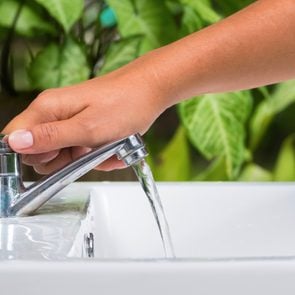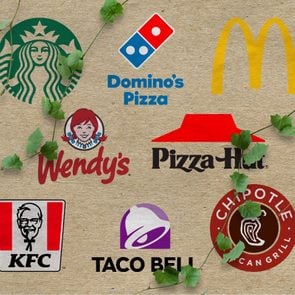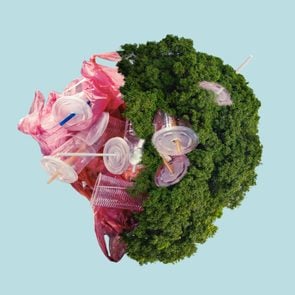What Is Sustainable Fish, and Why Is It Better for the Earth?
Updated: Sep. 20, 2022
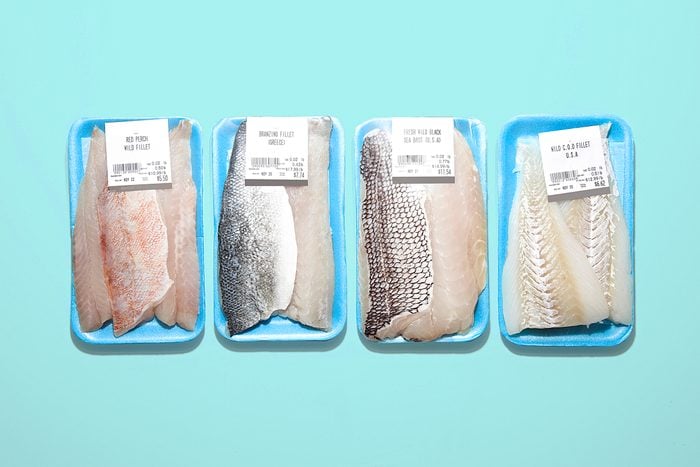
Choosing sustainable fish is better for the environment—and better for you. Here's why.
While world population growth has slowed down in the last couple of years, there are still more people on earth each year than there were in the previous one. It’s one of the big reasons the idea of sustainable living has exploded so dramatically, and why more and more people are learning how to recycle properly, compost at home, grow food sustainably and eat organic, which, in turn, can help reduce carbon footprints and slow climate change.
But it’s not just sustainability-minded individuals who are working to protect the planet. The seafood industry, for one, is working to produce more sustainable fish. Here, we’re taking a look at the steps fishermen and companies are taking to harvest fish sustainably and why this is important, plus what you can do at the grocery store to make sure you’re shopping responsibly. By supporting companies that are implementing sustainable practices, you’re helping them continue the good work they’re doing to protect the earth and its resources—and making a bigger difference than you might realize.
What is sustainable fishing?
“Sustainable fishing practices follow a management system that enables fishing to occur without exploiting the resource or negatively impacting the habitat or the stability of the ecosystem,” explains Kelly Harrell, Chief Fisheries Officer at Sitka Salmon Shares, a boat-to-doorstep seafood delivery company. Essentially, this means that fishing a particular fish in a particular area is not going to hurt the environment or anything else in it. Think of the ecosystem as a giant scale, with each species of marine life and plants it contains sitting on a different arm, completely balanced. Sustainable fishing practices ensure that one species doesn’t become so depleted that the scale tips, which will disrupt and potentially harm everything else in the ecosystem.
“We define sustainable seafood as seafood from sources that can maintain or increase production without jeopardizing the structure and function of affected ecosystems,” adds Erin Hudson, director of the Seafood Watch Program at the Monterey Bay Aquarium. This seafood is defined as coming from a wild-capture fishery, or a fishing ground that already exists in nature that is being utilized for commercial purposes. Fish farms, on the other hand, are man-made enclosures where fish are bred and farmed. (More on these below.)
Seafood Watch has established standards that they use to assess whether or not a fishery is producing sustainable fish. “The Fisheries Standard assesses four aspects of a fishery, which must perform well in all four to be rated a Best Choice,” says Hudson. They are: the condition of the fish population, the fishery’s impact on other fish or animals that are caught or used as bait, if the fishery is trying to understand and minimize its impact on the environment, and the fishery’s impact on the seafloor and food web.
Seafood Watch also has a Salmon Fisheries Standard that will help you determine if the salmon you’re thinking of buying is sustainable.
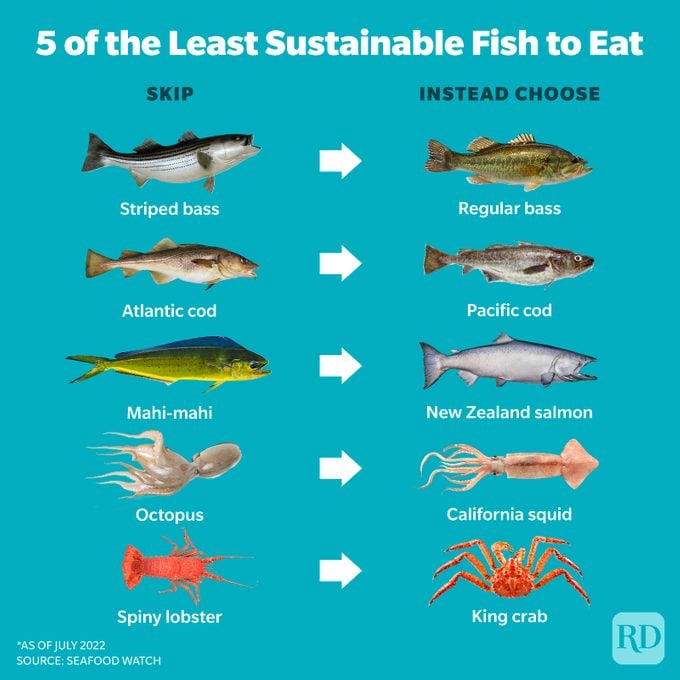
Is local fish sustainable?
We know we can support farmers in our area by shopping at the local farmers market, but should we be buying local fish as well? Hudson says this is a tricky question, and different from other types of sustainable food, as the regulations that determine whether fisheries can label their fish as local vary from state to state. There are also different definitions of local when it comes to fish.
“Local can mean customer proximity to the fisherman or where the fish is landed or caught, the distance traveled by a product in the supply chain, the management boundary of the fishery, or the relationship between the fisherman and the consumers,” says Harrell. “The Local Catch Network that we are a part of does a good job at providing some considerations.”
You can use the Seafood Finder on the Local Catch website and filter according to which definition of local is most important to you. For example, choosing fish that is caught close to where you live and therefore does not need to travel as far to get to you will limit the use of fossil fuels in transporting fish across great distances. Or if you can buy the fish directly from the fishermen through a local market, they will recoup more of the profit.
What is the problem with unsustainable fishing?
While sustainable fishing takes care to minimize its environmental impact, unsustainable practices essentially do the opposite—catching and/or killing the target seafood without a care for other disruptions that may occur. “An example of an unsustainable fishing method is blast fishing (also known as dynamite fishing). This is the practice of using explosives to stun or kill fish,” says Hudson. “While this method makes the collection of fish easy, the explosion can destroy the underlying habitat.”
The type of fishing gear used also influences whether or not a method is sustainable. “Certain types of fishing gear, like bottom trawls, longlines and gillnets, tend to catch more non-targeted species,” Hudson explains. That means that anything that swims by, such as sharks, sea turtles and marine mammals, can get caught. This gear can disrupt ocean habitats as well. “Sandy, muddy or rocky seafloor may seem to have little to offer, but in fact, it is alive and home to many important creatures,” says Hudson. “Dragging trawls and dredges along the seafloor can destroy these important habitats and have negative long-term effects on the very species targeted by fishermen.”
Overfishing, or catching fish faster than they can reproduce, is also a problem. “Technology has revolutionized modern fishing practices,” notes Hudson. “Today, many boats have large trawling gear, satellite navigation, refrigeration and processing equipment on deck. This makes it possible to find fish more efficiently, catch lots of fish quickly and stay at sea longer. A growing global population, increasing demand for seafood and government subsidies drive fishermen to catch more fish, often beyond sustainable levels.”
All of this has long-term consequences, and the removal of other species from a habitat impacts the entire food web. “On coral reefs, for example, many fish eat algae, which keeps the coral reef clean and thriving,” says Hudson. “In areas where these species have been overfished, algae overgrows the reef, killing corals and negatively impacting the many species that call the reef home.”
Larger ships going out for longer periods of time also results in more energy and fossil fuels burned and more greenhouse gases emitted. This can negatively impact the climate and quicken global warming.
Are fish farms a sustainable choice?
According to the National Oceanic and Atmospheric Administration (NOAA), many of the fisheries in the United States produce wild-caught seafood. But much of the fish that is imported from other countries (which is much of the seafood we consume) is produced in fish farms, or aquaculture. Seafood Watch has an Aquaculture Standard, which measures whether or not a farm is operating sustainably.
While fish farms can produce sustainable fish, there are many steps they need to take, from making sure the farm produces minimal waste, chemicals and pollution to measuring the potential impact of disease spread to regulating the amount of wild fish and other food sources used to feed the farmed fish.
Why should you buy sustainable fish?
The next time you’re standing in the seafood section at the grocery store, take the time to look for a sustainable fish option. As a consumer, you have the power to influence the industry and the suppliers. Just like taking steps to go green, such as using reusable straws, water bottles and coffee mugs, if you care about buying the most sustainable fish, the industry will be forced to listen and adjust their business practices accordingly to meet consumption needs.
Not to mention the fact that it’s likely better for you too. “The sustainability of the fishery can influence both the health of the fish and the nutrient content of the fish for consumption,” says Harrell. “Fish that are sustainably managed are most often thriving in their environment and provide the best opportunity for a diet of high macro and micronutrients for the consumer.”
Sustainably harvested fish are also more likely to be processed in a healthy way. “Fish that is sustainably caught and processed the same day is typically more likely to be chemical- and preservative-free, like ours,” says Ruben Castro, CEO and founder of Del Pacifico Seafoods. “Our shrimp are flash-frozen only once, so they haven’t been thawed and refrozen multiple times before getting to you.”
10 of the most sustainable fish to eat
- U.S. catfish
- Farmed clams
- Farmed Arctic char
- U.S. farmed bass
- Alaskan Pacific cod
- New Zealand salmon
- U.S. farmed shrimp
- U.S. farmed trout
- Albacore tuna
- King, snow and tanner Alaskan crab
This information is accurate as of July 2022.
Make sustainable shopping a habit
You’ve already taken the important step of learning why it’s important to buy sustainable fish. To start prioritizing sustainable fish in your personal consumption habits, Seafood Watch recommends the following steps: First, ask at restaurants, grocery stores and fish markets if they have sustainable seafood. Then download a consumer guide (if you’re wondering whether sardines or oysters are sustainable, you can find it there), and whenever possible, choose options that are in the Best Choice category of the Seafood Watch recommendations. One important note: These recommendations are updated regularly, so be sure to check back for the most recent versions of the consumer guides every six months or so.
If you want to learn more about how your food and drink consumption can support the environment, check out our article on water conservation.
Sources:
- Kelly Harrell, Chief Fisheries Officer at Sitka Salmon Shares
- Erin Hudson, director of the Seafood Watch Program at the Monterey Bay Aquarium
- NOAA Fisheries: “Understanding Sustainable Seafood”
- Ruben Castro, CEO and founder of Del Pacifico Seafoods

